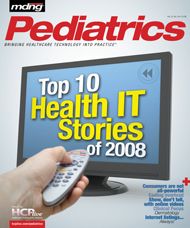The Dirty Secret about Health 2.0: Consumers Are Not All-powerful
President-elect Barack Obama’s ascension to the White House was fueled in part by an Internet-driven grassroots campaign that brought together Americans of all backgrounds.
I’m writing this on November 5, 2008, a day after a historic election that propelled a once little-known Chicago politician to the summit of US political power. President-elect Barack Obama’s ascension to the White House was fueled in part by an Internet-driven grassroots campaign that brought together Americans of all backgrounds. The campaign deftly utilized social networks, blogs, mobile phone messaging, and other technologies to energize and motivate millions of citizens. Obama’s election should silence the skeptics who still believe the social media revolution is a fad. If political operatives can leverage social technologies to elect a president, smart people can use them to improve healthcare in the United States and around the world.
This is not a new idea. In October, more than 1,000 people involved in developing technologies designed to harness the energy and wisdom of the crowds to solve vexing health-related problems descended on San Francisco to attend the 2008 Health 2.0 conference. A major focus of the conference was on helping health consumers fi nd accurate medical information and navigate the complex health fi nance system.
Although Health 2.0 has moved from the fringe to the mainstream, some observers are skeptical about its relevance and impact. Dmitriy Kruglyak, founder of the online community Trusted.MD, is one of them. In a widely cited blog post, he suggested that “Health 2.0 represents irrational exuberance around unproven healthcare ideas that do not have a sustainable business model.” Health 2.0 conference co-founder Matthew Holt quickly shot back, calling Kruglyak’s analysis “weak” and suggesting that Health 2.0 is about how “consumers/patients/ citizens relate to each other” not “hyping the creation of a standalone industry.”
I think Health 2.0 boosters tend to overestimate the impact consumers and social technologies will have on health. Simply put, consumers are not all-powerful. They do not have the ability to equally infl uence medical technology development, healthcare budgets, and other major drivers of the complex health system.
Consumers’ influence over the development of medical technology is limited; although their input can have some effect on relatively unimportant factors like medical device features, much of the critical activity is driven by drug manufacturers and other health industry players. Consumers also exert only indirect influence on health financing and the allocation of healthcare dollars. Although they can help reduce administrative expenses and demand for health services, they do not have much control over how large sums of money are spent by hospitals, state and federal government agencies, and managed care companies.
However, consumers can play a central role in medical decision making (eg, drug prescribing, end-of-life care management, and diagnostic testing) and information sharing. We have recently seen many instances in which consumers using the Internet have influenced decisions about which medicines and therapies should be provided to patients. For example, the FDA recently announced that it would fund a clinical trial to determine if generic Wellbutrin is truly safe and effective. The FDA decided to conduct this study after reviewing hundreds of postings on an online forum hosted by the producers of The People’s Pharmacy indicating that generic and branded Wellbutrin are not equivalent. A great deal of research, including a new study published by Manhattan Research, indicates that millions of Internet users are regularly seeking and using health information produced on blogs, online forums and other social networks, and other social technologies.
Health 2.0 advocates who wish to ensure the success of the movement will have to be realistic about the true impact Internet-empowered consumers have on the health system. As we have just seen in the US presidential election, people using social technologies helped to accelerate information exchange and shape perceptions of policies proposed by the candidates. However, they had little infl uence on overall campaign strategy or on how campaign donations were spent. Obama and his advisors successfully leveraged these tools because they recognized how and when they would be most eff ective. Health 2.0 boosters would do well to follow their example.
Fard Johnmar is the founder of Envision Solutions, LLC, a full-service healthcare marketing communications consulting firm. Visit www.envisionsolutionsnow.com to learn more about the company and the services it offers.
